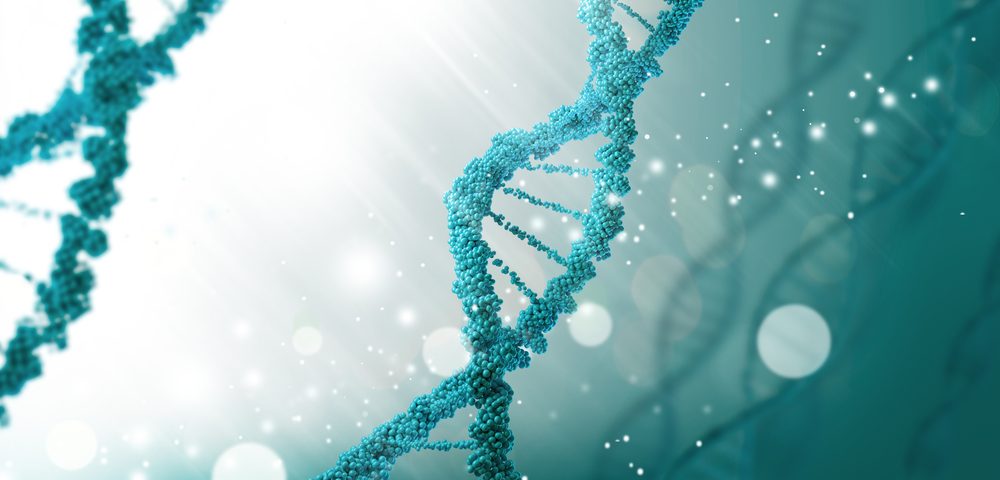An analysis of the genomic alterations and gene activity of diffuse large B-cell lymphoma (DLBCL) samples has allowed researchers to identify four genetic subtypes of the disease, which could help explain why only some patients respond to treatment.
The findings offer the potential for designing tailored strategies targeting each DLBCL genetic subtype.
The study, “Genetics and Pathogenesis of Diffuse Large B-Cell Lymphoma,” was published in the The New England Journal of Medicine.
“These findings are the culmination of two decades of research at NCI and elsewhere, advancing our understanding of the effect of DNA mutations and gene expression on lymphoma biology and outcome,” Ned Sharpless, MD, director of National Institutes of Health’s National Cancer Institute (NCI), where the research was conducted, in a press release.
“This refined molecular classification will be instrumental in predicting prognosis and tailoring therapy for patients with DLBCL going forward,” Sharpless added.
Patients with DLBCL, the most common type of lymphoma, show heterogeneous responses to the current standard therapy — chemotherapy plus Rituxan (rituximab).
Researchers had already identified two major subgroups of DLBCL: activated B-cell-like (ABC) DLBCL and germinal center B-cell-like (GCB) DLBCL, each arising from different cells of origin and with different profiles of gene activity.
While patients with ABC-DLBCL had a 40% survival rate, the average survival rate was 75% for those with GCB-DLBCL.
However, even in the GCB subgroup, many patients experienced disease relapse after treatment.
So researchers wanted to further explore the genetic and molecular features of DLBCL to identify other subtypes that could better predict a patient’s response to chemotherapy.
“The first question we wanted to tackle was whether there were other molecular features of the tumors that could help us explain why some people were well-served by chemotherapy,” said the study’s lead author, Louis M. Staudt, an MD and PhD, and principal investigator at the NCI’s Center for Cancer Research (CCR).
“And the second, related question was, if we could understand who was not responding well to treatment, could we understand the genetics of these tumors to suggest new potential therapies beyond chemotherapy? The answer to both questions was yes,” Staudt said.
The research team examined the genomic alterations and gene activity of tumors from 574 DLBCL patients. Based on their genetic mutations, researchers clustered tumors into four prominent genetic subtypes — MCD, BN2, N1, and EZB.
“Genetic aberrations in multiple genes distinguished each genetic subtype from other DLBCLs,” researchers wrote. “These subtypes differed phenotypically, as judged by differences in gene-expression signatures and responses to immunochemotherapy.”
Patients with the subtypes BN2 and EZB responded better to chemotherapy and had higher survival rates, while those in the MCD and N1 subtypes had poorer outcomes.
Each of the subtypes could be found in patients with ABC- or GCB-DLBCL, which explains why, for example, a patient with the “bad” ABC-DLBCL type may respond well to chemotherapy if they have the BN2 and EZB subtypes.
These findings have clear implications for how clinicians decide the course of therapy.
“This shows we’ve gone beyond where we were,” Staudt said. “Before, even with our most advanced molecular diagnosis, we would have said all ABC tumors are the ‘bad’ type and they need to be treated aggressively.”
“Now we can implement this kind of classification and say that even if a patient has the ‘bad’ ABC type, they have the ‘good’ genetic type, BN2. So there’s a much better chance of chemotherapy curing the disease,” he said.
The findings will be shared on the NCI’s Genomic Data Commons to make them available for future research.
Now, researchers hope that upcoming clinical trials incorporate the new molecular classification when studying new therapies. This would allow researchers to tailor the treatment of patients based on their genetic subtype, ensuring they receive the most appropriate treatment while moving away from standard chemotherapy strategies, associated with potential severe side effects.
A Phase 2 clinical trial (NCT01325701) has already done this for the ABC and GCB subgroups, showing that Imbruvica (Ibrutinib) has better response rates in the ABC-DLBCL groups, compared to those with GCB-DLBCL.
“The goal is to find the right drug for the right person at the right time,” said Staudt. “And we feel this genetic understanding of diffuse lymphoma is a step forward in precision therapy.”


